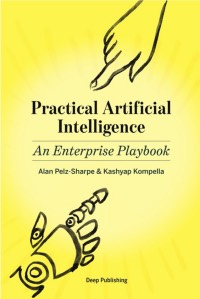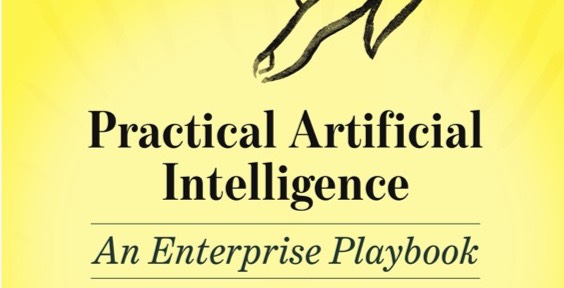AI was one of the big buzzwords of 2019 and almost every vendor boasted that their solution was ‘AI-enabled’ or ‘AI-driven’. That certainly caught the attention of organisations that were looking for IT solutions. It was imperative to include AI in board room discussions and at business networking events. But a closer look at the so-called ‘AI-enabled’ solution revealed that it was not really AI–instead, it was based on machine learning. As organisations increasingly embrace digital technologies for transformation, they make the mistake of using traditional approaches for AI projects. An AI project is different from an IT project–old methods and processes used for traditional IT projects do not work here. This is what the authors of the book Practical Artificial Intelligence set out to explain at the outset. In the first chapter itself, we are introduced to the various types of AI applications: exploratory AI, predictive AI, predictive AI and prescriptive AI. Then we are taught about the differences between AI and machine learning (ML) and introduced to the types of ML: supervised learning, semi-supervised learning, unsupervised learning, and reinforcement learning.
It’s a known fact that AI projects fail and that many seldom take off. But what could be the reasons for that? To find out, the authors spoke to many institutions, developers, analysts, consultants, and implementers of AI. They learned about their experiences with AI. They also held discussions with institutions in the public and private sector. Their research was noticed by the AIIM (Association of Intelligent Information Management) which commissioned them to design a practical training course for AI.
Coming back to the book, here are some observations:
- The book has been written in simple language and you don’t need a background in computer science or machine learning to understand the concepts–all of which are explained in lucid terms. Business leaders will find it easy to understand all the concepts and relate to the real-world applications described here.
- This is practical knowledge as the concepts covered draw from the authors’ experiences with their clients, and in using AI in the enterprise.
- It touches on all aspects of AI, machine learning and related concepts such as natural language processing, computer vision, deep learning, neural networks, AI & ML models.
- It busts myths and clears concepts on AI, machine learning and related technologies.
- Tells you what AI can and cannot do.
- Tells you what questions to ask vendors about AI and ML.
- Except for Chapter 4, the concepts do not go deep into technical concepts. You won’t see pages of mathematical equations, code and AI algorithms in this book. So data scientists, data analysts, ML programmers, and AI application developers should look elsewhere if they want to learn ML programming concepts or the technical concepts of data science.
- It adds context by including real-world industry examples and descriptions of AI projects.
- It includes useful and insightful chapters on AI strategy, AI tools, how to run an AI project, and how to build an AI team.
There’s been much hype around AI. While AI has been touted as a technology that can accomplish almost anything, including achieving world peace, the reality is that today’s AI does not equal or surpass human intelligence. The authors give us many examples to convince us, in the chapter titled ‘The Dark Side of AI’ (which we found most interesting!). Even the biggest technology companies in the world have failed in their AI applications and projects. AI technology does not suffer from human traits like exhaustion due to long hours at work. But AI cannot make judgments like human beings. AI is weak at distinguishing between genders, race, biases (is bias-free AI possible?). How do you keep bias in check, especially when it can be so subjective? Yes, there are tools to check for bias in your AI data and processes. Read about these tools in Chapter 7.
AI needs a lot of data and training before it can get nearer to perfection. You need to feed in a lot of data into ML models. Chapter 2 explains the limitations of AI.
As someone once said, it is good to know what you do not know. So if you want to know everything that there is to know about AI and machine language, this book will give you a solid foundation.
 Practical Artificial Intelligence
Practical Artificial Intelligence
An Enterprise Playbook
Alan Pelz-Sharpe & Kashyap Kompella
Deep Publishing
Pages 140
Indian edition: Rs 249 (Amazon.in/Flipkart)
US Edition: US$ 17.99
Kindle version: Free (Kindle Unlimited)









